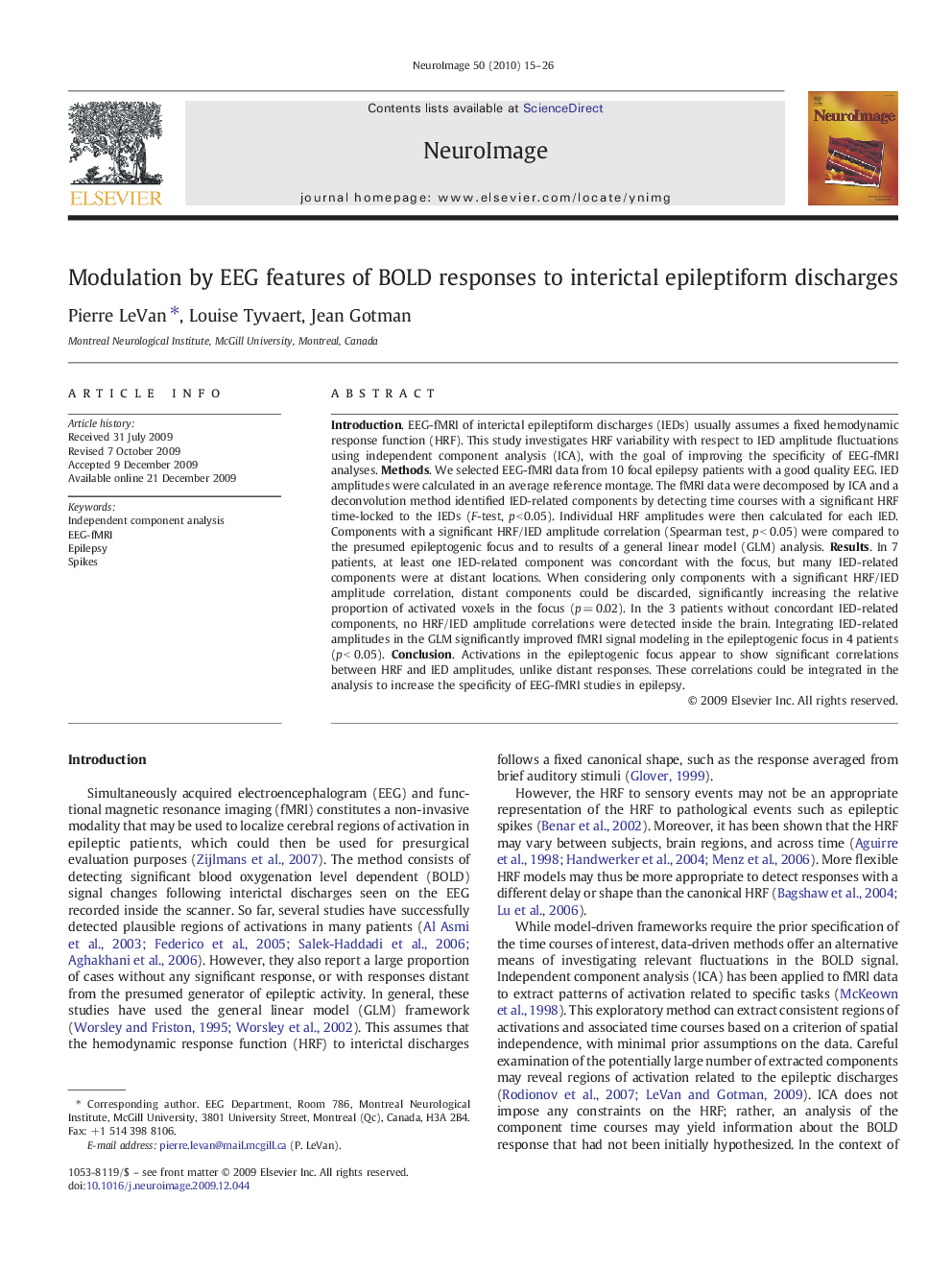| Article ID | Journal | Published Year | Pages | File Type |
|---|---|---|---|---|
| 6036915 | NeuroImage | 2010 | 12 Pages |
Abstract
Introduction. EEG-fMRI of interictal epileptiform discharges (IEDs) usually assumes a fixed hemodynamic response function (HRF). This study investigates HRF variability with respect to IED amplitude fluctuations using independent component analysis (ICA), with the goal of improving the specificity of EEG-fMRI analyses. Methods. We selected EEG-fMRI data from 10 focal epilepsy patients with a good quality EEG. IED amplitudes were calculated in an average reference montage. The fMRI data were decomposed by ICA and a deconvolution method identified IED-related components by detecting time courses with a significant HRF time-locked to the IEDs (F-test, p < 0.05). Individual HRF amplitudes were then calculated for each IED. Components with a significant HRF/IED amplitude correlation (Spearman test, p <   0.05) were compared to the presumed epileptogenic focus and to results of a general linear model (GLM) analysis. Results. In 7 patients, at least one IED-related component was concordant with the focus, but many IED-related components were at distant locations. When considering only components with a significant HRF/IED amplitude correlation, distant components could be discarded, significantly increasing the relative proportion of activated voxels in the focus (p = 0.02). In the 3 patients without concordant IED-related components, no HRF/IED amplitude correlations were detected inside the brain. Integrating IED-related amplitudes in the GLM significantly improved fMRI signal modeling in the epileptogenic focus in 4 patients (p <   0.05). Conclusion. Activations in the epileptogenic focus appear to show significant correlations between HRF and IED amplitudes, unlike distant responses. These correlations could be integrated in the analysis to increase the specificity of EEG-fMRI studies in epilepsy.
Related Topics
Life Sciences
Neuroscience
Cognitive Neuroscience
Authors
Pierre LeVan, Louise Tyvaert, Jean Gotman,
